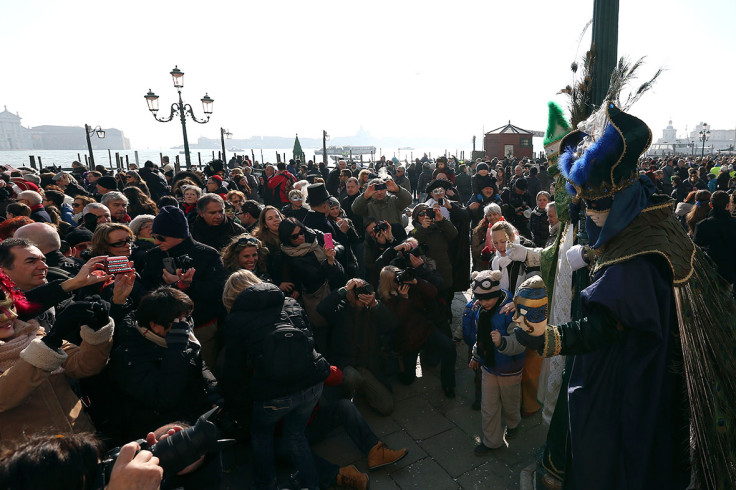Rio de Janeiro Carnival 2015: 10 festivals and cultural celebrations from around the world

Carnival season is fast approaching and the world famous Rio de Janeiro Carnival will start on 13 February, bringing five days of samba, choreographed performances and glittering costumes.
The largest carnival in the world, Rio attracted a record 400,000 foreign visitors in 2014 and annually sees two million people per day take part in the joyous celebration.
Although it is the biggest, Rio is not the only celebration of its kind. As well as pre-Lent bacchanalian festivals in the Americas and Europe, other celebrations of culture and heritage are getting under way around the world.
Binche, Belgium
The carnival of Binche takes place on the Sunday, Monday and Tuesday preceding Ash Wednesday (18 February in 2015) and is listed as a "Masterpiece of the Oral and Intangible Heritage of Humanity" by Unesco. Dating back to the 14<sup>th century, the centrepiece of the carnival's festivities are clown-like performers known as Gilles, dressed in wooden footwear and wax masks.
Venice, Italy
The Carnival in Venice was first recorded in 1268 and its subversive native is reflected in Italy's many laws passed over centuries, which have attempted to restrict celebrations and the wearing of masks. Although the carnival was banned for years, when the city fell under Austrian control in 1798, celebrations were revived in the late 20<sup>th century. For 2015, the festival took place from 31 January to 17 February.

London, UK
The Notting Hill Carnival has been an annual event since 1966, taking place on the streets of west London over the three days of the August bank holiday. Led by members of the West Indian community, it has attracted around a million people in recent years – making it one of the largest carnivals in the world. Despite its name, the event is not part of pre-Lent festivities.
Quebec, Canada
The Quebec Winter Carnival is a festival that has been held on and off since 1894 but has been celebrated annually since 1955. Up to a million people attended in 2006, making it one of the largest winter festivals in the world. It starts in January and continues into mid-February.
Trinidad and Tobago
The carnival is held annually on the Monday and Tuesday before Ash Wednesday and is widely associated with calypso music – although this has been recently replaced with Soca music. It is the most significant event on the cultural and tourism calendar of the islands, with several events leading up to the carnival itself.

New Orleans, United States
The New Orleans Carnival season is marked with parades, balls and king cake parties, in a variation of the traditional manner of preparing for the start of the Catholic season of Lent. Celebrations are concentrated for the two weeks before and through Fat Tuesday – Mardi Gras.
Tenerife, Spain
The Carnival of Santa Cruz de Tenerife is the second most popular festival in the world after Rio, which is partially why the city of Santa Cruz de Tenerife is twinned with the city of Rio de Janeiro. In 1980, it was declared a Tourist Festival of International Interest by the Spanish secretary of state for tourism.
Macedonia
The most popular carnivals in the Republic of Macedonia are held in Vevčani and Strumica. The celebration in Vevčani has been held for over 1,400 years, and takes place on 13 and 14 January. The Strumica Carnival has been held since at least 1670, when the Turkish author Evlija Celebija wrote: "I came into a town located in the foothills of a high hillock and what I saw that night was masked people running house-to-house, with laughter, scream and song."

Mazatenango, Guatemala
The most famous carnival celebration in Guatemala is in Mazatenango, an eight-day event and feast of food, music, parades and games that bring the municipality in the Suchitepéquez department of the country to life.
Uruguay
The carnival in Uruguay is the largest in the world with more than 40 days of celebration, beginning at the end of January and concluding in March. The European-style festival captures elements from Bantu and Angolan Benguela cultures imported with slaves in colonial times, and the two main attractions are the parades Desfile de Carnaval and Desfile de Llamadas.
© Copyright IBTimes 2025. All rights reserved.





















